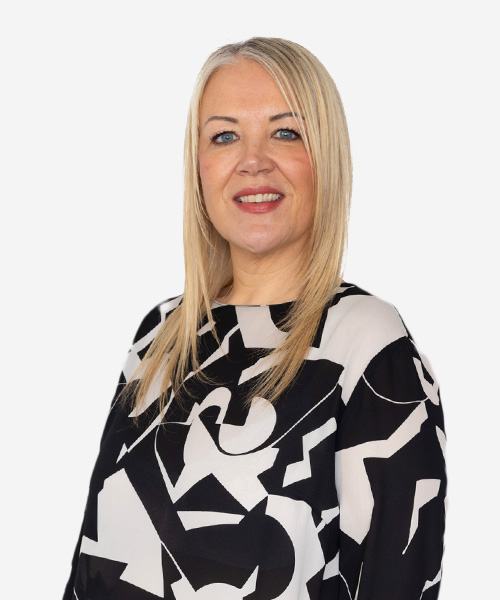
Ray Biggs
Chief Operating Officer
Our multinational team of native speakers are experts in sales and customer service excellence.
Our team
Our people make our business and because of this, we are absolutely committed to providing them with a challenging and rewarding career. We recognise that every individual brings something unique to the business and our philosophy is to train, develop and empower our staff to achieve both their own goals and those of the company.

Client Executive
Client Executive
Cosette acts as a bridge between the business and our clients, understanding unique challenges and providing strategic solutions that create a lasting impact.

CX Solutions Consultant
CX Solutions Consultant
Leveraging over 10 years of experience within a contact centre environment, Adam helps new clients turn cost centres into strategic assets, combining technology and emotive CX to optimise efficiency and elevate customer satisfaction.

Engagement Lead
Engagement Lead
Clare leads our initiatives that prioritise employee well-being, engagement, and development within the business. First point of contact for visitors and clients, ensuring a professional, welcoming experience.

Senior Operations Manager
Senior Operations Manager
Sophie is passionate about transforming customer experience, specialising in scalability and multilingual teams. With a smile and a commitment to excellence, she fosters high-performance cultures and innovative service solutions that elevate customer experience while upholding and enhancing brand reputation.

Senior Client Executive
Senior Client Executive
As a Senior Client Executive in the BPO industry, Dan manages multiple clients across various verticals, leading cross-functional teams – including technical and sales departments – to drive operational excellence and business growth.

Lead Talent Acquisition and Strategy Specialist
Lead Talent Acquisition and Strategy Specialist
Leah is responsible for ensuring we recruit the right people, facilitating and coordinating recruitment activities, advising and helping to design appropriate selection methodologies and ensuring HR legalisation and recruitment best practice is adhered to

Head of Commercial Finance
Head of Commercial Finance
Rachel is the senior finance professional responsible for driving the financial strategy and commercial decision-making within a business

Director of Operations
Director of Operations
Clint is our award-winning Director of Operations, responsible for overseeing the overall performance, efficiency, and success of our customer experience.

Director of Operations
Director of Operations
Clare is one of two Directors of Operations, responsible for overseeing the overall performance, efficiency, and success of our customer experience.

Service Delivery Team Leader
Service Delivery Team Leader
Eden is our Service Delivery Team Leader for luxury brands including Charlotte Tilbury and Puig.

Head of Training, Development & Quality
Head of Training, Development & Quality
Kelly has 25 years experience in leading customer service, outbound, training and development functions at a senior level.

Director of Finance
Director of Finance
Phil is accountable for all aspects of financial and management accounting and payroll, passionately ensuring the financial health, predictability and trustworthiness of Ventrica.

Director of Shared Services
Director of Shared Services
Colin’s mission is to ensure that we set our clients up for success by managing from the Transition/Implementation of our client requirements, ensuring we hire the right talent, design and deliver superb training programmes and develop resource planning.

Senior Client Executive
Senior Client Executive
Siobhain is a dedicated CX and Contact Centre professional with decades of experience in client relationship management and business development.

Operations Manager
Operations Manager
Sarah is an Operations Manager with special responsibility for our Bureau service and RVS
Join a passionate team creating exceptional experiences. Based in Southend-on-Sea, our award-winning environment is vibrant and supportive. In customer service, tech, or operations – your impact counts. Great communicator with a positive mindset? We’d love to hear from you!

Chief Executive Officer
Chief Executive Officer
As CEO, Iain leads Ventrica’s strategic growth, customer experience innovation, digital transformation, operational efficiency, profitability, team excellence, client satisfaction, and collaborative stakeholder engagement. Iain boldly drives Ventrica with passion and trust, blending human empathy and digital transformation to lead globally in emotive CX management solutions.

Chief Operating Officer
Chief Operating Officer
Ray is responsible for Operations, IT, HR and Shared Services at Ventrica, delivering brilliant experiences for our people and our clients.

Chief Technical Officer
Chief Technical Officer
Peter has been CTO at Ventrica for over 6 years and is a highly knowledgeable IT Professional who leads our software sales, development and transformation teams.

Chief Financial Officer
Chief Financial Officer
Jason Shaw FCA is the Chief Financial Officer at Ventrica, with a depth of knowledge in scaling high-growth ventures across technology, digital, creative, and professional services sectors.

Head of HR
Head of HR
Vicki is our Head of HR and is responsible for managing the human resources function, ensuring our workforce is supported, motivated, and aligned with the company’s goals.

Chief Marketing Officer
Chief Marketing Officer
Patrick leads Ventrica’s brand and marketing strategy, using storytelling to showcase Emotive CX. He ensures our messaging creates meaningful connections and engages customers with clarity and purpose across every touchpoint. #ilovewhatido
Join a passionate team creating exceptional experiences. Based in Southend-on-Sea, our award-winning environment is vibrant and supportive. In customer service, tech, or operations – your impact counts. Great communicator with a positive mindset? We’d love to hear from you!
I have been with Ventrica for around 2 years now. From the start I have felt comfortable and appreciated. My team mates and management are super supportive and overall amazing people! I am so proud to be a core member of the team and love how everyone is so down to earth and hardworking!
Janath Khan, Customer Service Advisor, Ventrica